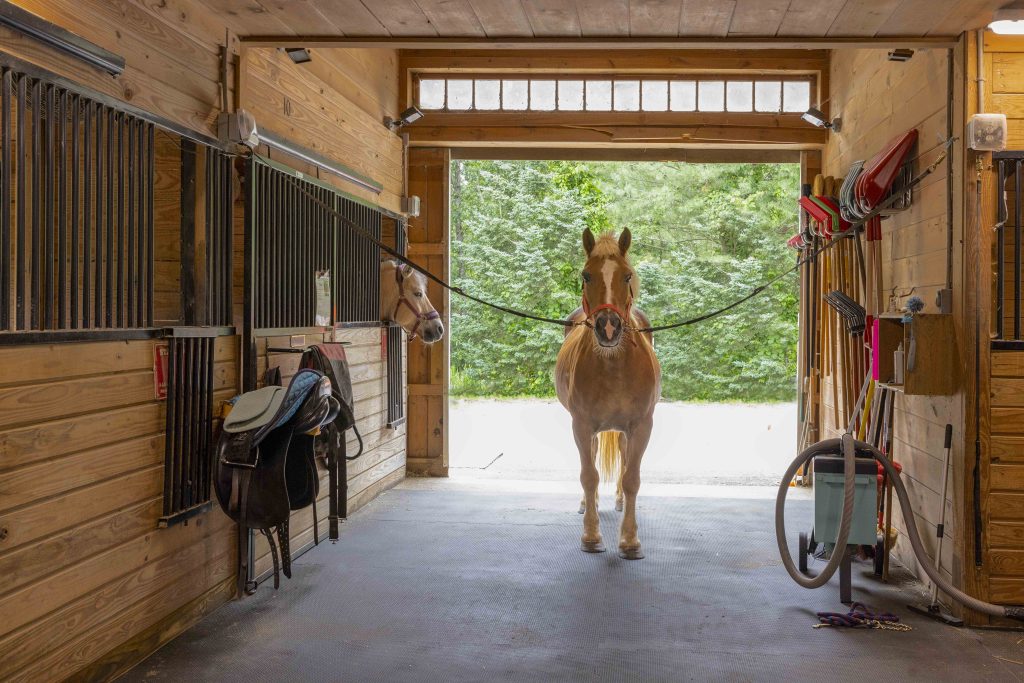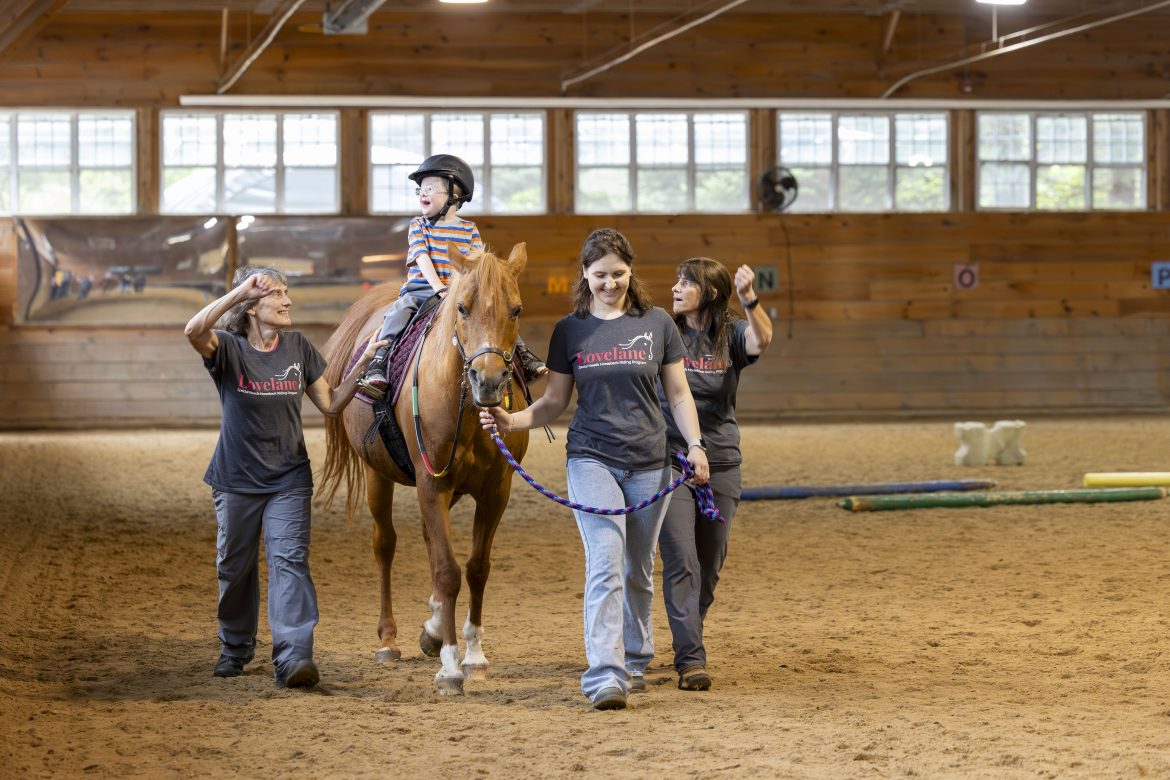Lovelane’s therapeutic equine program helps children with disabilities learn, grow, and thrive.
By Jennifer Sperry Photography by Betty Wiley
You can see it in their smiles. You can see it in their confidence. You can see it in their enthusiasm entering the barn.
A weekly therapy session at Lovelane is not like any other medical appointment. At this 13-stall horse barn in Lincoln, Massachusetts, students take part in 30-minute private riding lessons, with help from volunteers, typically one leading the horse and one on each side of the horse for support.
Each rider has some form of physical or cognitive disability. Some move with the aid of wheelchairs or braces; others have sensory issues and communication challenges; still others are battling cancer. But at Lovelane, these children are not patients—they are horseback riders. For many, sitting in that saddle represents their first time participating in a sport.
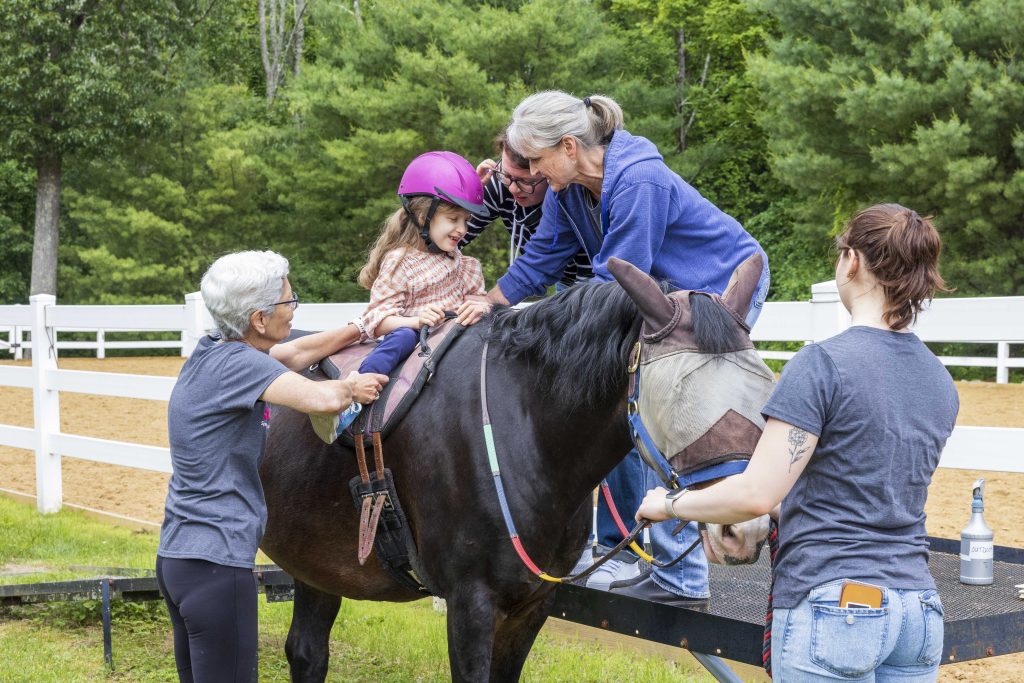
Throughout New England, a variety of equine therapy programs tackle issues ranging from physical disabilities to mental health. Most treat both adults and children, but Lovelane is unique in that it’s a pediatric program only. Open 12 months a year, 7 days a week, it provides high-quality therapeutic horseback riding to a roster of over 130 students ages 2 through 22.
“A lot of our students have multiple medical appointments during the week for therapy and testing,” explains Executive Director Wendy Bell, who began working with Lovelane a decade ago as a volunteer. “Here, the kids get all this therapeutic goodness, and it doesn’t feel like a typical therapy appointment at all.”
The physical benefits of Lovelane’s riding program include improved trunk control, balance, muscle tone, range of motion, joint mobility, and fine motor coordination. Other benefits—perhaps the best kind—are mental, ranging from better mood and increased communication to enhanced pride and self-worth. For any child, with or without disabilities, partnering and communicating with a 1,000-plus-pound animal can be very confidence building.
“One of our parents told us about how her daughter, who is wheelchair-bound, told her friends at school about her riding,” relates Bell. “They didn’t believe her until they saw a picture of her on a horse and were in awe of what she could do. It earned her a whole new level of respect from her classmates.”
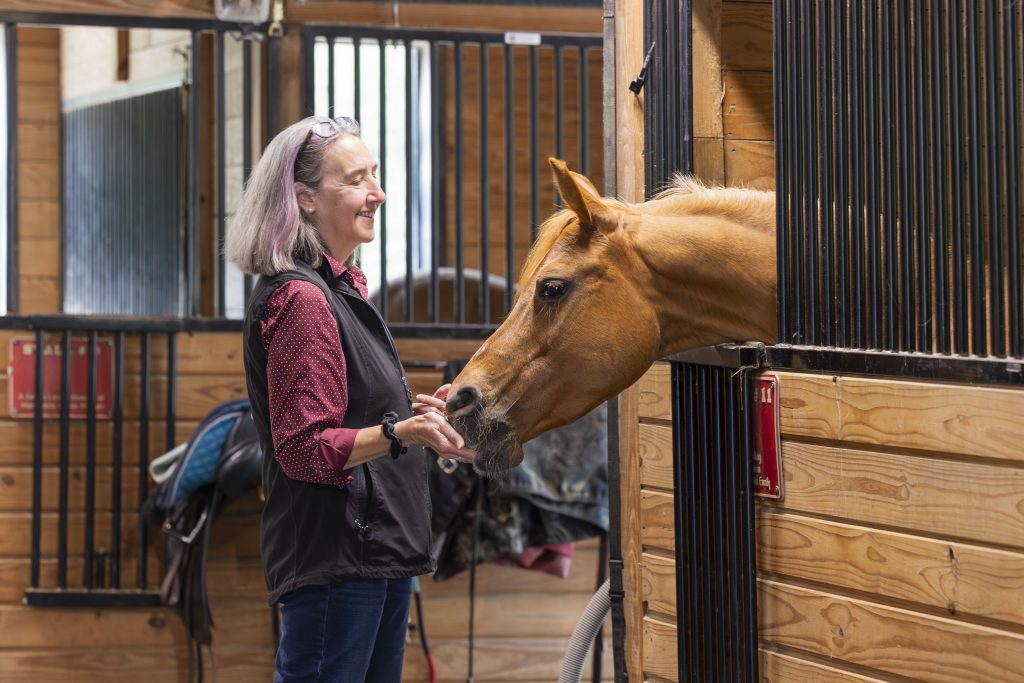
Back in 1988, Lovelane began with a small crew: founder Debby Sabin, five riders, one volunteer, and three borrowed horses. “Debby is an occupational therapist and has always been a firm believer in the power of therapy. She started the program by knocking on doors, asking if any stable owners would be willing to let her use their horses. The first to say yes was a stable on Love Lane in Weston, Massachusetts,” recalls Bell.
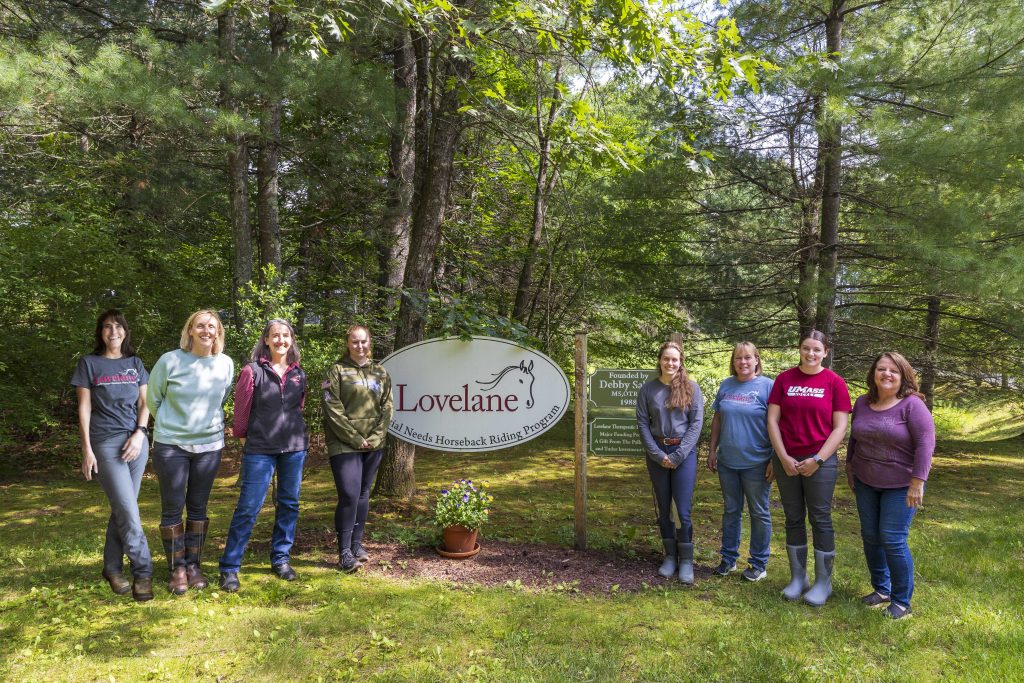
After a couple property moves, and with a growing wait list of children, a capital campaign in 2004 allowed the organization to settle into its current site, tripling its capacity. Specifically designed for the special needs population, Lovelane’s campus includes indoor and outdoor arenas, a therapy room, office space, 13 horse stalls, and access to outdoor trails.
“The trail is such a bonus. For many kids, it represents a unique opportunity to be out in the woods,” says the director. “Experiencing the birds and the trees on a wood chip-covered trail is very freeing for them. We also have adjunct unmounted programs,” continues Bell, “where children as young as three meet every week and learn about horse behaviors and care. These sessions help foster cooperative play and peer interactions.”
Program revenue accounts for 40 percent of the organization’s budget, with fundraising making up the difference. Over 200 volunteers work in partnership with the nonprofit’s small staff, therapists, and instructors to achieve over 4,500 riding sessions annually.
Another unique attribute of Lovelane is its dedication to riders’ long-term growth. Once a student is accepted, he or she becomes part of the barn community and stays in the program, on average, 10-12 years. The support is purposefully individualized to each student’s unique needs and goals.
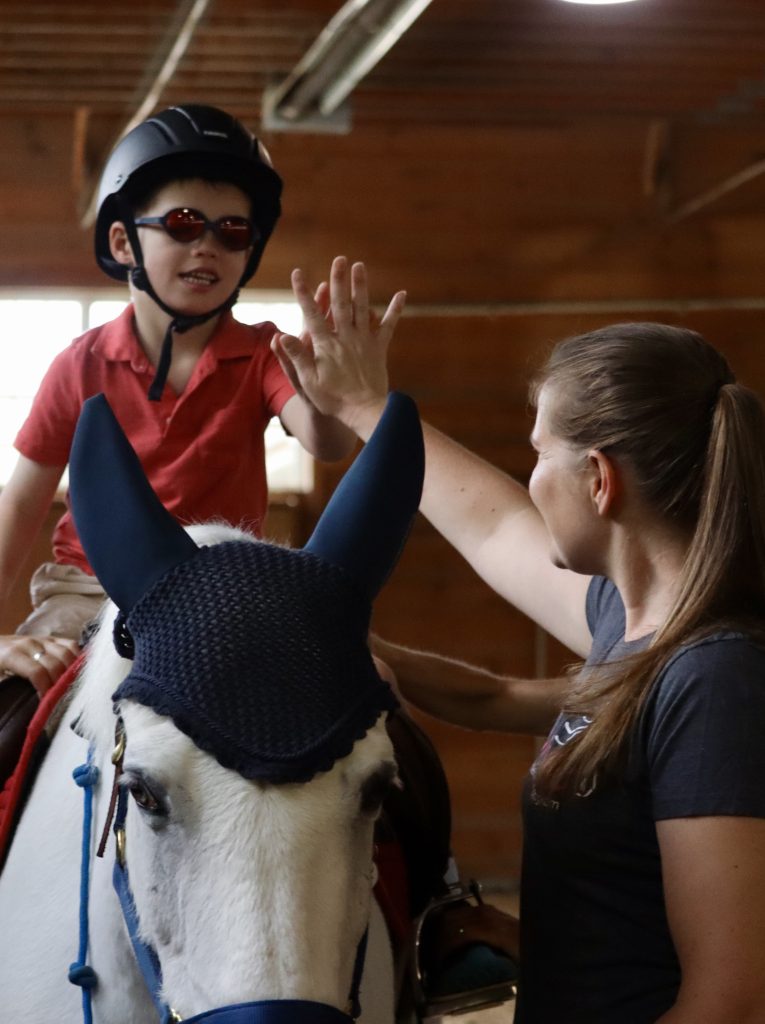
“Especially for those students with developmental delays and muscle issues, being on a horse is great exercise,” says Bell. “A horse’s gait mirrors that of a human’s, which means that every step on a horse represents realistic neurological input of what walking feels like. That’s one of the reasons why riding is so effective for children who have trouble walking on their own.”
At Lovelane, children have spoken their first words, taken their first steps, and engaged in a sport for the first time. It is a generator of milestones, a happy place where serious life challenges are forgotten for a little while.
